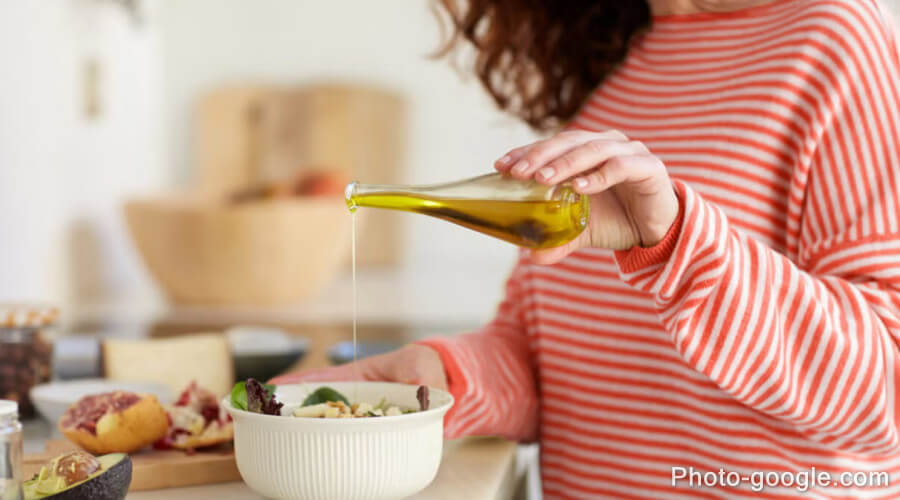Most of us grew up with one type of olive oil in the kitchen. It sat on the counter in a clear bottle. It was just… oil. We used it for cooking without a second thought.
But what if I told you that real, high-quality olive oil is as complex and vibrant as a fine wine?
Choosing a truly great olive oil is one of the simplest yet most impactful upgrades you can make in your kitchen. It can elevate a simple salad into a gourmet experience and a piece of toast into a delicacy. This guide will teach you how to spot the good stuff and explain why it matters so much.
Why Does High-Quality Olive Oil Matter?
The difference between a generic supermarket olive oil and a true Extra Virgin Olive Oil is night and day. The benefits fall into two main categories: flavor and health.
Flavor: A Taste of the Terroir
A high-quality olive oil is bursting with flavor. Depending on the olives used, it can be peppery, grassy, fruity, or even a little bitter in a pleasant way. It has character and personality. This vibrant taste can be the star ingredient in a dish. A cheap, low-quality oil, on the other hand, often tastes flat, greasy, or stale. It adds nothing but fat to your food.
Health: Liquid Gold for Your Body
True Extra Virgin Olive Oil is a superfood. It is packed with healthy monounsaturated fats and powerful antioxidants called polyphenols. These compounds are known to fight inflammation, support heart health, and protect your cells from damage. However, these delicate compounds are destroyed by heat and improper processing. This means the health benefits are only found in authentic, high-quality oil.
Decoding the Label: What to Look For
The grocery store aisle can be confusing. Let’s break down the key terms you need to know.
1. “Extra Virgin Olive Oil” (EVOO)
This is the most important term. EVOO is the highest grade of olive oil. To earn this label, the oil must be extracted from olives without the use of high heat or chemical solvents. It is essentially fresh-pressed fruit juice. It also has to pass strict laboratory tests for its chemical composition and a sensory test by a trained panel to ensure it has no flavor defects. Anything labeled just “Olive Oil” or “Light Olive Oil” has been refined and has lost its flavor and health benefits.
2. “Cold-Pressed” or “Cold-Extracted”
These terms reinforce the idea of EVOO. They mean that no excess heat was used during the extraction process. Heat can increase the amount of oil you get from an olive, but it destroys the delicate flavors and healthy polyphenols. Seeing “cold-pressed” on the label is a good sign.
3. The Harvest Date
This is the single most important indicator of quality that many people overlook. Olive oil is a fresh product. It does not get better with age. The harvest date tells you exactly when the olives were picked and pressed. Always look for the most recent harvest date possible. A “best by” date is less reliable, as it can be two years after the oil was bottled.
4. Region of Origin or Estate
Look for a specific region, like “Tuscany, Italy” or “Kalamata, Greece.” Even better is a single-estate oil, which comes from one specific farm. A bottle that just says “Product of Italy” could be a blend of oils from several different countries that were only bottled in Italy. Specificity is a sign of quality and traceability.
How to Buy High-Quality Olive Oil: A Simple Checklist
-
Look for a Dark Bottle: Light is the enemy of olive oil. A dark glass bottle or an opaque tin protects the oil from light damage and keeps it fresh longer. Avoid clear bottles.
-
Prioritize the Harvest Date: Choose the most recent one you can find.
-
Seek Out Specificity: Look for a specific country, region, or estate name.
-
Insist on EVOO: Ensure the label clearly says “Extra Virgin Olive Oil.”
-
Trust Your Taste: A good EVOO should taste fresh and a little peppery. If it tastes like crayons, cardboard, or nothing at all, it is likely old or low-quality.
How to Use Your High-Quality Olive Oil
You have bought a beautiful bottle of EVOO. Now what? It is important to know that there are two main ways to use it.
For Finishing: This is where your best, most flavorful oil should be used. Drizzling it over a finished dish allows its vibrant character to shine.
-
Drizzle over salads, soups, or grilled vegetables.
-
Use it as a dip for crusty bread.
-
Finish a plate of pasta or a piece of grilled fish with it.
For a great example, a beautiful finishing oil is the key to a perfect, simple vinaigrette dressing.
For Cooking: You can absolutely cook with EVOO. It is a myth that you cannot. However, you might want to use a slightly less expensive but still good-quality EVOO for daily cooking. Its smoke point is high enough for most stovetop applications like sautéing. For deep dives into the science of cooking with olive oil, organizations like the North American Olive Oil Association provide excellent data.
Your Kitchen’s Best Investment
Choosing a high-quality olive oil is a simple change with a profound impact. It is an upgrade for your food, your health, and the simple joy of cooking.
Stop thinking of it as just a cooking fat. Start thinking of it as a finishing sauce, a health supplement, and a key ingredient in its own right. Your taste buds will thank you.
You Can Also Read HERE More About This Article.

Leave a Reply